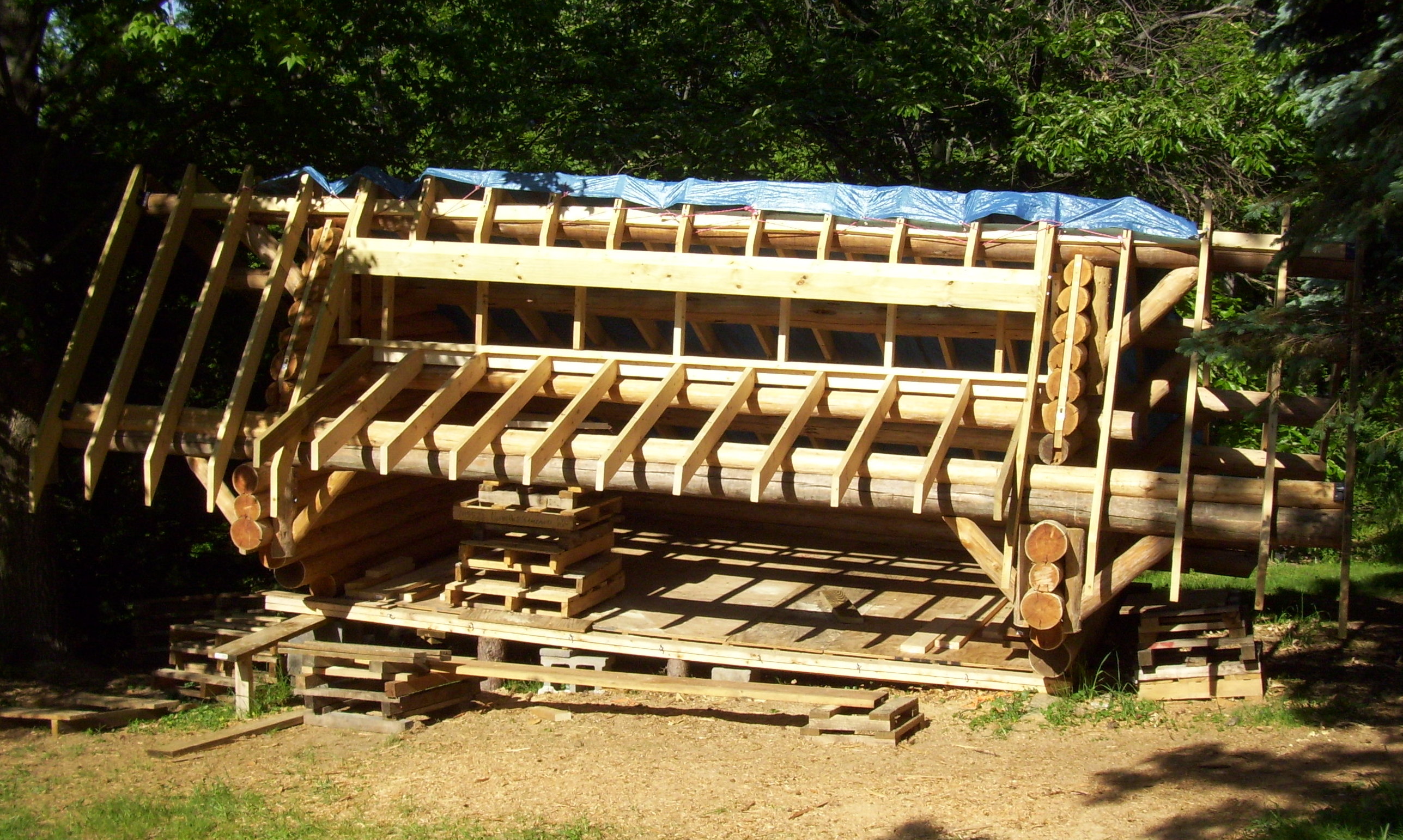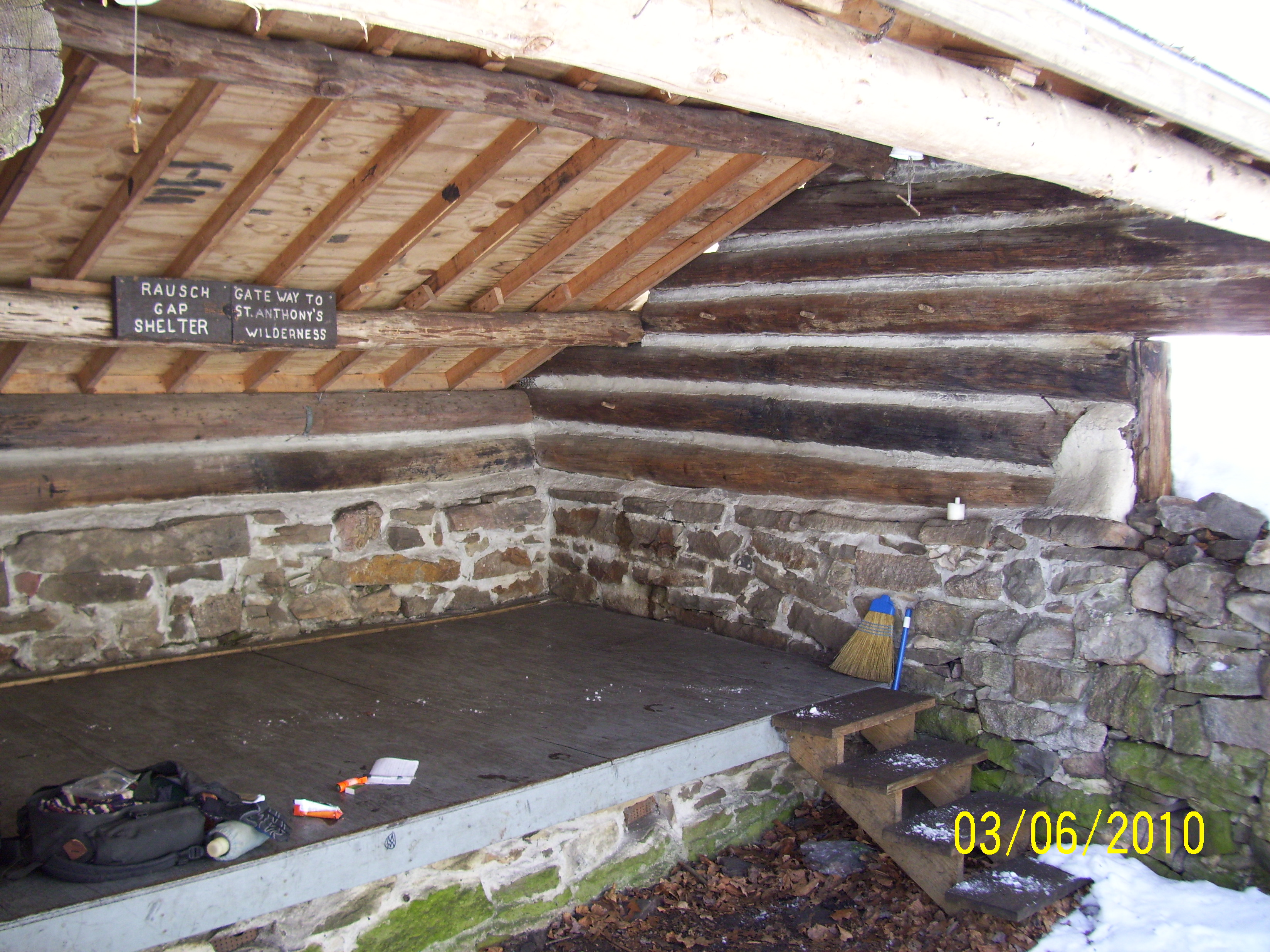by Dave Crosby, Shelters Chairman, Blue Mountain Eagle Climbing Club
The Blue Mountain Eagle Climbing Club (BMECC) has taken on a huge restoration project at the Rausch Gap Shelter, located on the Appalachian Trail within State Game Lands #211 in Lebanon County.
Using funds obtained from an L.L.Bean grant, the project was supposed to have been a series of complex “spot-repairs” that would have removed several decayed sections of wall-logs and repaired other sections, after which a new, larger roof would have been built to shield the shelter from the elements. However, once the repairs were begun, it became obvious that the damage was much more extensive than first thought, and, in consultation with the PA Game Commission, DCNR, and the Appalachian Trail Conservancy, it was decided that the only way to save the structure was to remove the entire upper wooden section and replace it with a similarly-sized new wooden section. The original stone foundation and the floor will be re-used, so the shelter’s “footprint” and carrying capacity will remain the same.

(Above: Exterior photo of shelter, taken in 2010. Photo courtesy of Dave Crosby.)
In June 2011, club members harvested 2 dozen larch trees from a tract of state forest land, and, after the logs were transported to the club’s property in Bernville, the “pre-fab work” began. Logs were peeled and stacked, a temporary “pre-fab” foundation was built, and a sill-plate was constructed.

(Above: 2012 photo of the replacement section that is being pre-fabbed at the Rentschler Arboretum. Photo courtesy of Dave Crosby).
Then came the chainsaw work! The original 1970’s design is being updated in two ways. Since the new design uses the Scandinavian-scribe method of log building (the same method used in the 1988 construction of the Eagle’s Nest Shelter), the walls will have no chinking. More noticeably, the roof overhang will be enlarged to give the walls more protection from the elements.
Thanks to the mild weather, work has continued throughout the winter and into the spring. On almost every weekend, the sounds of chainsaws could be heard as they cut logs to length, fashioned notches, and carved grooves in the logs. The “core crew” is comprised of six club members: Dennis Burkhart, Mick Charowsky, Dave Crosby, Todd Gladfelter, Bob Pyhel, and Brian Swisher (who also designed the club’s new website at www.bmecc.org, and who updates our progress in the slideshow at the “special projects” link). As word of the project spreads throughout the community, more folks are showing up at the work-trips to help. Club members, members from other clubs, Boy Scouts, and “just regular folks” from the community have participated. We’ve even had help from one of the local chapters of Alpha Phi Omega (the National Service Fraternity)!
Pre-fab of the shelter-shell is only one part of this project. The old wooden section of the original shelter will have to be cut apart with reciprocating saws (chainsaws can’t be used due to the large number of unseen steel tie-rods and nails hidden within the walls), and the scraps will have to be removed from the site. The old stone foundation will have to be repaired where damaged, and a sill-plate constructed atop the old foundation.
But the shelter-shell is not where it needs to be, so at some point, we will have to move it to the existing site within SGL #211…and that is where our plans are still “up in the air," so to speak.

(Above: 2012 photo of the inside of the shelter (the portion that will be replaced). The replacement logwork will be an integrated "part" of a larger "whole." Photo courtesy of Dave Crosby.)
The original plan called for each log to be numbered. Then the shell was to be dismantled, loaded on a flatbed truck, and driven to the closest possible location to the existing site, where the parts would be unloaded, carefully carried in, and re-assembled atop the old stone foundation. However, BMECC has also requested military assistance through the “Innovative Readiness Training” Program (IRT). If the IRT application is approved, a helicopter and crew could be provided to lift the shell from its location, fly it to the site, and set it down on the foundation. The Department of Defense (DOD) has accepted the club’s application, but hasn’t acted on it yet, so we are developing both transportation plans simultaneously; we will discard one plan after DOD makes its decision.
In the meantime, BMECC continues to plan for the final phases of this project. As the landowner, the PA Game Commission must be included in this phase of the planning, and we also need input from the Appalachian Trail Conservancy. While much of this project has been handled over the internet, there are a few meetings which must be face-to-face and “in the field." Until these last details are finalized, the nearly-completed shelter-shell will sit quietly at the Rentschler Arboretum in Bernville – waiting for the paperwork to catch up with it!